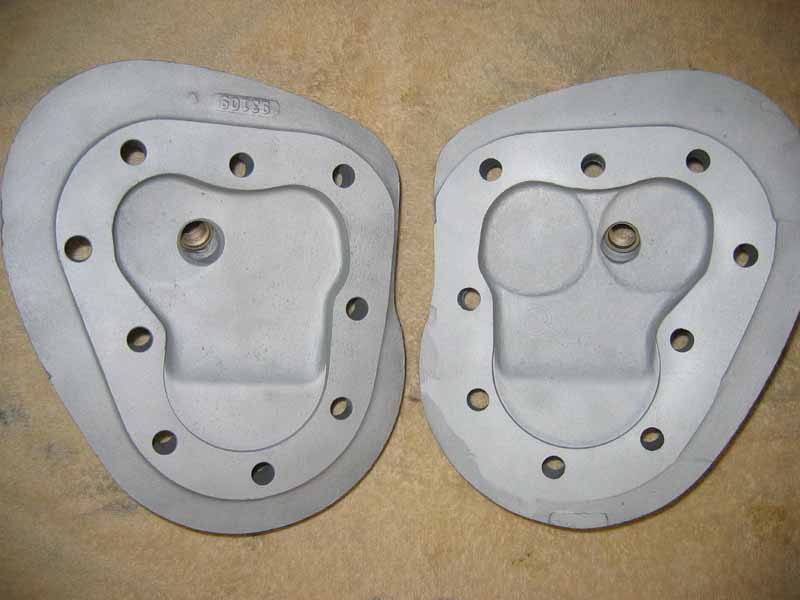Making Valve to Head Clearance
It is common to need to "Relieve" the combustion chambers in the heads where the valve heads might hit the roof of the combustion chambers. Any time that hi-lift cams are installed, this clearance MUST be checked. The fuel tanks, and heads must first be removed. I like to glass-bead the chambers first (and clean them out very well with hot "Tide", and compressed air). The valves should be adjusted as normal with .004" Intake, and .006" exhaust clearance. I like to use a dial indicator on top of each valve to see exactly when they are at the maximum lift (this is not essential, as long as you carefully find the very top of the valves lift). Note: At this time, using the dial indicator, and zero'd at the top of valve lift, you can also check for the valve springs net clearance before "Coil-Bind". The minimum is .010" clearance per coil-wind of a spring. With Gary Stark's new special 7-coil springs, there should be lots of extra clearance, but with any other spring, this clearance should be checked. Using two large screwdrivers (one under each opposite side of the valve head), pry the valve upward all that it will go until it stops, and check the dial indicator to see how much extra the valve opened beyond the normal max-lift setting. Look at my "Tech Talk" section on "Valve Spring Coil-Bind"! Now, after that test is done, you check each valve one at a time for hitting the head. I like to bring the valve to it's max-lift position, and leave it there untill you are ready to do the next valve. I take a big black "Magic Marker", and completely blacken the area above the valve in question. Then WITHOUT a head gasket, loosely mount the head with (3) head bolts. DO NOT tighten the bolts. They are used as a guide to locate the head above the valves. Check for any "daylight" clearance between the cylinder, and the head. If there is none, then you don't need to do any "Relieving". If there is "daylight", then you will need to die-grind some material away where the valve, and head contact. Wiggle the head around, and the valve head will leave "witness marks" in the black ink in the chamber. It will show you exactly where the valve is hitting. Be very careful to sculpt away the needed clearance. Remember, you can't put metal back, and too much metal gone will lower compression. Once you have clearanced for each valve, the head gasket thickness will provide the necessary valve to chamber clearance.

The head on the left is not yet "Relieved". The head on the right has been highly relieved for .486" lift cams, and this head has been milled ALOT! Notice how I smoothed the edge where the chamber rounds over above the cylinder. These are on my "Super Chief" 80" motor.
CONTACT INFORMATION:
James R. Mosher
(505) 466-7870


